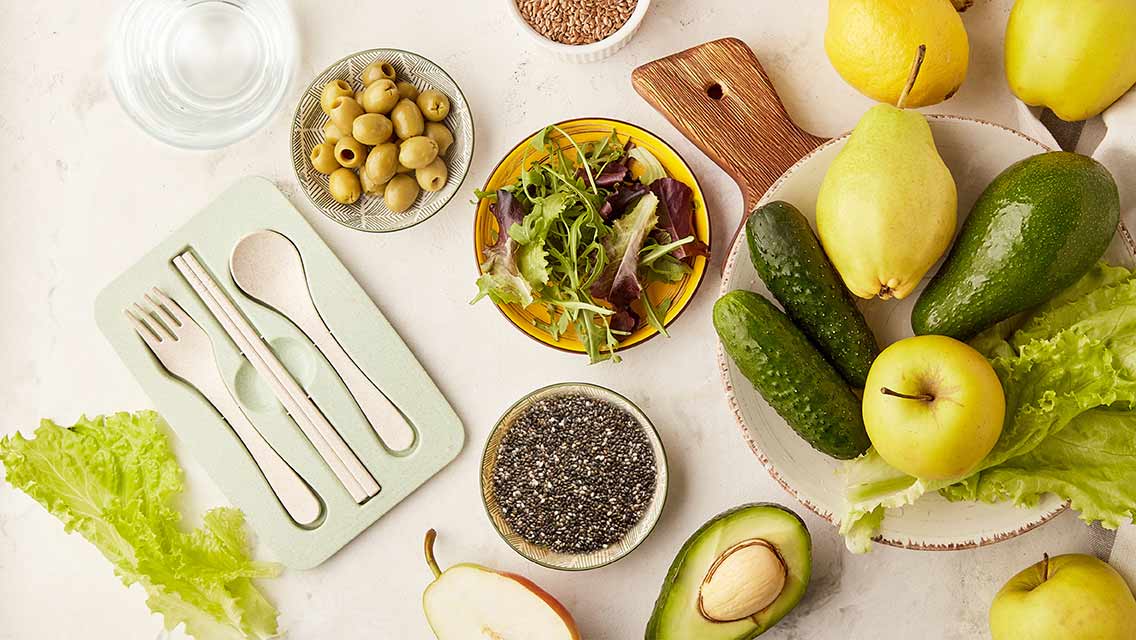In an ideal world, our bodies would quietly detoxify without any extra help from us. After all, bodies are naturally designed to deal with a whole host of everyday threats – from bacteria and viruses to shocks and frights. But in the modern world, even bigger problems arise. There is just too much for the body to cope with. Our natural systems of elimination simply cannot handle the strain.
In an ideal world, our bodies would quietly detoxify without any extra help from us. After all, bodies are naturally designed to deal with a whole host of everyday threats – from bacteria and viruses to shocks and frights. But in the modern world, even bigger problems arise. There is just too much for the body to cope with. Our natural systems of elimination simply cannot handle the strain.
And what a strain it is. Our bodies are sloughing off an incredible amount of rubbish each and every day – in our urine and stools; in sweat and the exhalation of gases. Some is metabolic waste, dead cells, the by-products of digestion and other natural debris. But nowadays more and more of it is toxic waste: pesticides and food additives; prescription and over-the-counter drugs; the chemicals we inhale from cigarettes and pollution. There is even a toxic price to pay for the cosmetics we put on our faces and the everyday products and furnishings we use in our homes.
In our search for an easy, economical and pleasant life, we are turning the world – and in particular our bodies – into a toxic battleground. Just remember that what goes in does not necessarily come out. “We all have in our body between 300 and 500 synthetic industrial chemicals that would not have been there 50 years ago, because they did not exist,” warns Dr. Michel Odent, natural-childbirth pioneer and director of the Primal Health Research Centre in the UK. Dr. Odent feels so strongly about the toxic threat that he puts any of his patients trying to conceive on a program of detoxification.
Naturopath Leon Chaitow also firmly believes in the horror of toxins. “Do we need to detoxify? Yes we do, and badly,” he insists. “One child in four now has major allergies, which is a 400 to 500 percent progression since the 1940s. Breast milk worldwide – whether that of Amazonian Indians or housewives in Houston – is now contaminated with DDT, dioxin and various other contaminants. That is an example of the degree of toxicity that has permeated the planet. There is no one who is now free of it.”
Unfortunately, medical research evidence for detoxing is as meagre as a bowl of salad. “There is no scientific evidence to show that following a ‘detox’ diet is of benefit,” states Dr. Frankie Robinson of the British Nutrition Foundation.
That is perhaps unfair. There may not be extensive scientific trials on detoxing (because detoxing is of little interest to pharmaceutical companies which sponsor such trials) but many thousands of people can attest to its efficacy. Most of the evidence for detoxing comes from naturopathy, a system of natural medicine that has been practiced (with very good results) for over a hundred years.
Janine Leach of the British Naturopathic Association admits that research is “urgently needed” but continues that, “there is perhaps more formal evidence than you might imagine.” For example, a recent study reported in the Scandinavian Journal of Rheumatology found a “clinically significant beneficial long-term effect” in detoxing for people with rheumatoid arthritis.
How Your Body Detoxes: The Main Players
In order to understand how and where detoxing occurs in our bodies, let’s look at the fundamental mechanism of detoxing. These are the main players:
Lymphatic System: The lymphatic system is the body’s trash collection system. Lymph (a milky fluid that contains a type of white blood cell, proteins and fat) moves slowly around the body. As it passes through one of a multitude of lymph nodes, toxins are filtered out from the lymph. (See “What You Need to Know About Your Lymph System” to learn how to optimize your body’s lymphatic system.)
Liver: The liver acts as a giant chemical factory for the body. It clears the blood of poisonous substances (everything from alcohol to pesticides) that would otherwise build up in the bloodstream. It absorbs these toxins, alters their chemical structure, makes them water-soluble and then excretes them into the bile (a greenish-brown liquid). The bile then carries these waste products away from the liver to the intestines from which they are excreted. (Explore lifestyle and nutritional protocols to support this detoxifying organ at “The Everyday Liver Detox“).
Lungs: The lungs are the bellows of our respiratory system. When we breathe, oxygen is transferred from the air to the blood and the waste products of respiration (carbon dioxide and water) are ejected. However, we also inhale a host of air-born pollutants, such as carbon monoxide from traffic fumes, nicotine from cigarette smoke, formaldehyde from building materials and fabrics.
Kidneys: The prime function of the kidneys is to filter the blood, removing toxins and waste products generated by the breakdown of proteins. As we get older our kidneys naturally become less effective but can still function well – providing they are not overloaded with a toxic diet or environment.
Skin: The skin acts as a protective barrier between our internal organs and the environment. It is also a wonderful detoxifier, sweating out and sloughing off toxins that cannot be eliminated any other way. (Struggle with skin issues? See “What Your Skin Is Trying to Tell You“.)
Intestines: Our intestines carry away the waste products of digestion. A highly processed diet often leads to constipation, with toxic waste remaining in the body far longer than necessary (or safe).
Everyday Chemicals
What we put into our bodies – the foods we eat, the fluids we drink, the air we breathe – is crucial. Unfortunately the diet of the average American is a toxic nightmare. Almost all non-organic food is grown with pesticides of some kind. Many are health-threatening; some are carcinogenic (a nice way of saying they cause cancer); some may be mutagenic (they mutate cells); others could be teratogenic (causing birth defects).
A recent report found that pregnant women working with farm pesticides are almost three times as likely to lose their babies than other mothers-to-be. The worldwide death rate from pesticide poisonings alone tops 200,000 a year. In 1993 a study showed that women with a high concentration of DDT (an infamous pesticide) residues in their bodies were four times more likely to develop breast cancer than other women. According to another recent release, a new survey shows that many common products (such as milk, kiwi fruit, lemons and breakfast bars) have multiple residues from pesticides. Yet we still keep spraying our crops and buying the produce.
Allergies and sensitivities are on the increase. The prevalence of asthma alone is doubling every 20 years. For many people, allergies are directly related to the diet they eat, as many people are highly sensitive to the additives in food. Genetically modified organisms (GMOs) in food offer a further risk. Altering the genetic structure of crops to improve a particular quality may make economic sense but the health implications are dire. It’s an imprecise science with unpredictable outcomes and already there is concern that GMO food could trigger more allergies such as asthma and skin problems.
Everyone knows the life-threatening dangers of smoking – yet still people light up and also inflict their smoke on nonsmokers (passive smoking is statistically as dangerous as active inhalation). However, there are other, less obvious addictions that can impact your toxic load.
Many of us rely on our morning espresso to wake us up. We drink soda or tea throughout the day without a second thought. But caffeine (contained in all of these – not just the coffee) stresses the adrenal glands and puts our whole system in a state of unnatural alert. Over-use of alcohol puts strain on the liver and kidneys. Over-consumption of candy can load your system with toxic additives.
Symptoms of a Toxified System
How can you tell if you are suffering from toxic overload? There are many warning signs – but often we tend to ignore or misunderstand them.
These are the most common:
- Bloating, nausea, indigestion and a furred tongue (signs of an overloaded liver).
- Coughing, catarrh (inflamed mucous membranes), runny nose or constant sneezing, clogged sinuses (signs the lungs are under strain).
- Dark-colored, cloudy, scanty or strong-smelling urine; pain during urination (signs your kidneys may be stressed).
- Constipation, gas, wind, bad breath and, eventually, Irritable Bowel Syndrome (IBS) or colitis (signs of an overloaded digestive system).
- Frequent colds and flu; tiredness; puffiness; dark circles under eyes; sores that are slow to heal (signs of a lymphatic system under stress).
- Cellulite; congested, blotchy skin; blackheads, whiteheads or pimples (classic symptoms of an overloaded, toxified system).
- Sensitivities to additives or particular foods can also trigger: asthma, eczema, digestive problems, joint pain, insomnia, headaches, migraines, sore gums and mouth ulcers, tiredness, irritability, depression and anxiety; PMS; palpitations; high or low blood pressure; chest pains; low libido; aching muscles.
The Do’s and Don’ts of Detoxing
Detoxing is generally very safe (if you follow a sensible program). If you have any doubts, consult your doctor or a well-qualified nutritional therapist or naturopath.
- DON’T detox if you’re feeling unwell or are getting over an illness.
- DON’T detox if you have any blood glucose problems (see a professional who can tailor a program for you).
- DON’T detox if you are pregnant or breastfeeding – your body has other priorities.
- DON’T detox if you have an eating disorder – seek professional help.
- DON’T detox if you have any health problems or are on medication. Check with a healthcare professional before undertaking a detox program.
- DON’T follow a regime with only a few food choices for more than a month – you could create food intolerances.
- DON’T fast unsupervised for more than 24 hours.
- DO try hydrotherapy to help your body detox: mud baths, steams, saunas and body packs are very useful.
- DO try to get some Manual Lymphatic Drainage massage while detoxing – it will give your lymph a boost. (See “DIY Facial Lymphatic Massage” for this simple self-care technique.)
- DO try to get support from your family or friends – try detoxing together and you won’t be so tempted by other foods.
- DO try to avoid eating out while on detox – or choose your eating places carefully. Most restaurant food isn’t suitable for detox.
- DO drink plenty of water – it helps to flush out your system.
- DO be gentle on yourself: Detoxing can bring up old emotions and bring issues to the surface. Talk to good friends or a therapist if this happens.
How to Detox
Our bodies are crying out for help – and a careful, considered detox is an excellent way to kick-start a return to a more healthy lifestyle. The detox plan that follows is typical of the kind that a naturopath or nutritional therapist would recommend. It’s safe and sensible – and will support all the main detox systems of the body. Aim to carry it out for at least a week – three weeks is even better. The rules are simple:
Cut the following from your diet entirely:
- alcohol
- caffeine (tea, coffee, sodas, etc.)
- dairy products
- wheat
- convenience, processed, “junk” and “fast” foods (including ready-meals)
- salt and sugar
Don’t panic – this (surprisingly) leaves you with a large choice of good food! However, do watch out for “hidden” substances: Remember, for example, that pasta contains wheat, and many sauces contain both sugar and salt. Check labels carefully or ask your server for ingredients if eating out.
Eat lots of fresh fruit and vegetables. Make plenty of salads, soups, stews and casseroles. “Fresh beetroot, broccoli and celery juices” are great, says nutritional therapist Linda Lazarides. Choose organic produce whenever possible to avoid the danger of pesticides and other chemicals.
Get enough protein (three servings a day): deep-sea fish, organic chicken, soy and legumes. Grill or poach fish or chicken – or incorporate any of the above in stews. Linda Lazarides says to incorporate Brazil nuts, peanuts and sunflower seeds as they contain amino acids vital to the detox process. (Wondering how much protein you actually need? Check out “Here’s What 30 Grams of Protein Looks Like“.)
Instead of standard tea or coffee, try drinking green tea (rich in antioxidants) and dandelion coffee (liver-supporting). Warm water with a squeeze of lemon gently stimulates the digestion and helps to clear out toxins too.
Drink eight glasses of still (non-fizzy) water a day – more if you are exercising – to help your kidneys and digestive system. This should also help any caffeine-withdrawal headaches.
Detox products usually contain herbs that support the detox systems of the body – just don’t expect them to do all the work for you! Many naturopaths suggest that you take a short course of the herb milk thistle (for liver support) while detoxing. A quality probiotic (packed with “good” bacteria) can support the digestive tract. Ask at your local health store.
Skin-brush daily. Use a natural bristle brush on dry skin before bathing or showering. Brush firmly but gently, always moving toward the heart. This stimulates the lymphatic system and can help dislodge toxins. Afterward, put a drop of rosemary essential oil in your bath or on your shower mitt – rosemary also stimulates detox (but don’t use if you are pregnant). (See “How to Dry Brush for Healthy, Glowing Skin“.)
Incorporate exercise into your life. Walking and swimming are particularly supportive of the lymphatic system, as is rebounding (bouncing on one of those small trampolines).
Consider mental detoxing. Often our minds and emotions are as toxic as our bodies – and stress takes a terrible toll on the body. Try taking up yoga, meditation, floating, mindfulness or some other mind-clearing practice.
Jane Alexander is the author of 16 books on natural health and holistic living, including Detox for Mind Body Spirit, (Tuttle) and The Five Minute Healer (Simon & Schuster).
This article has been updated. It originally appeared in the March 2002 issue of Experience Life.




This Post Has 0 Comments